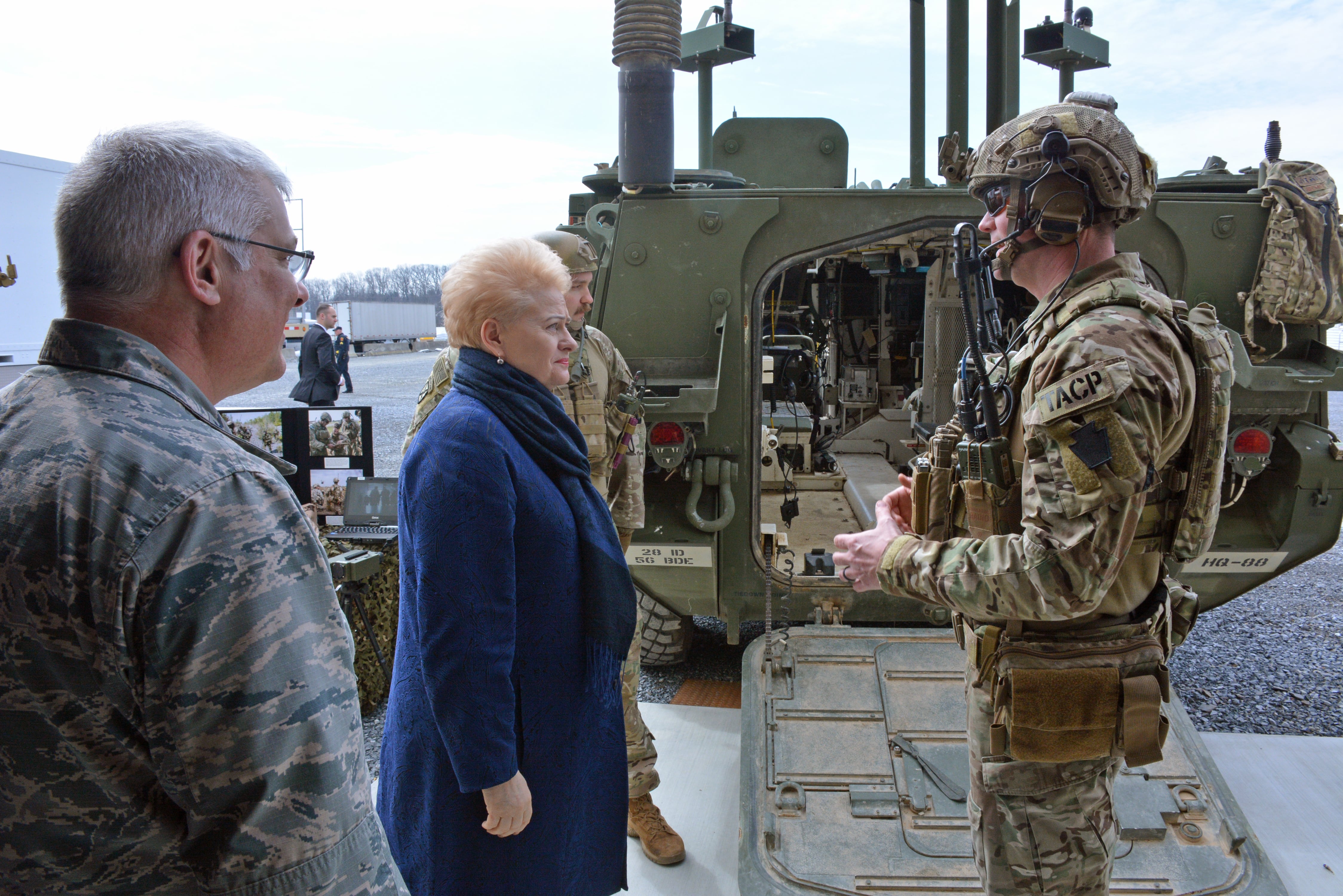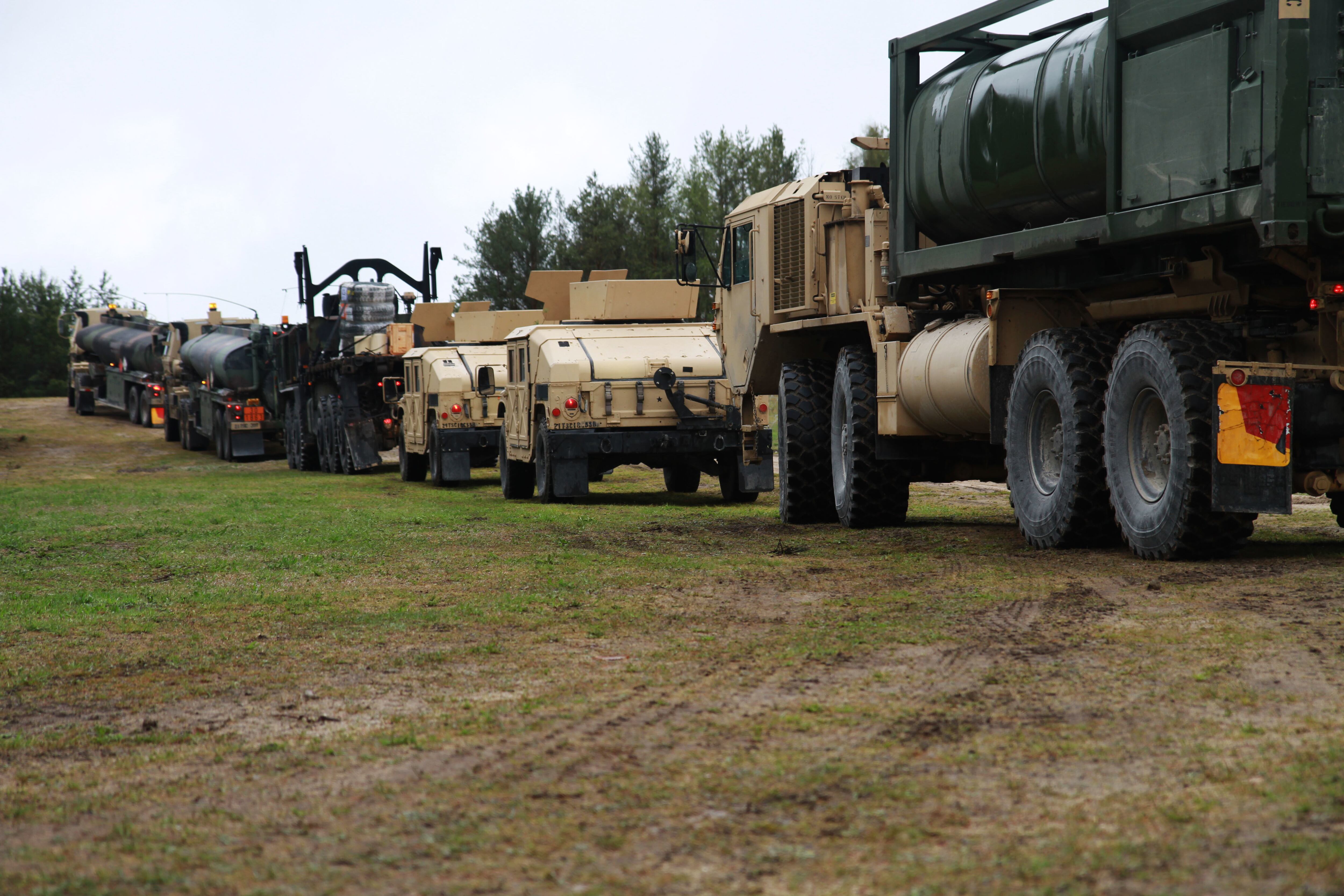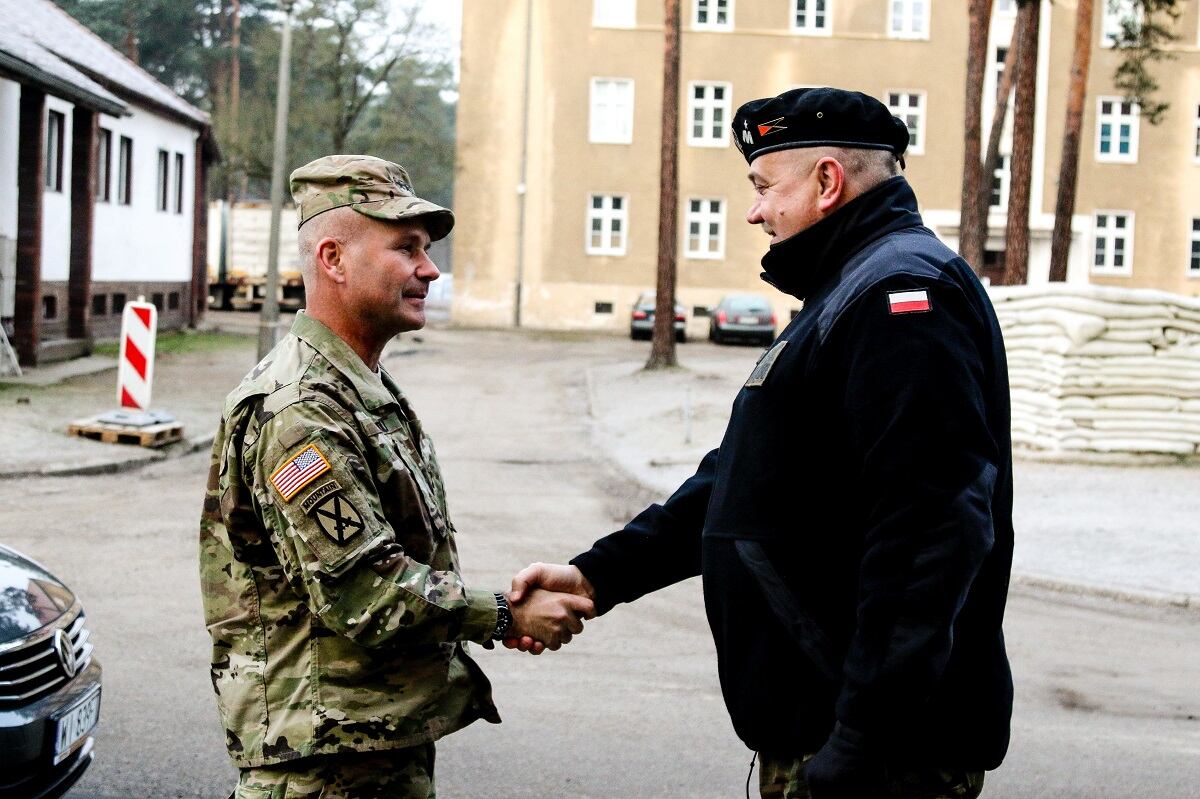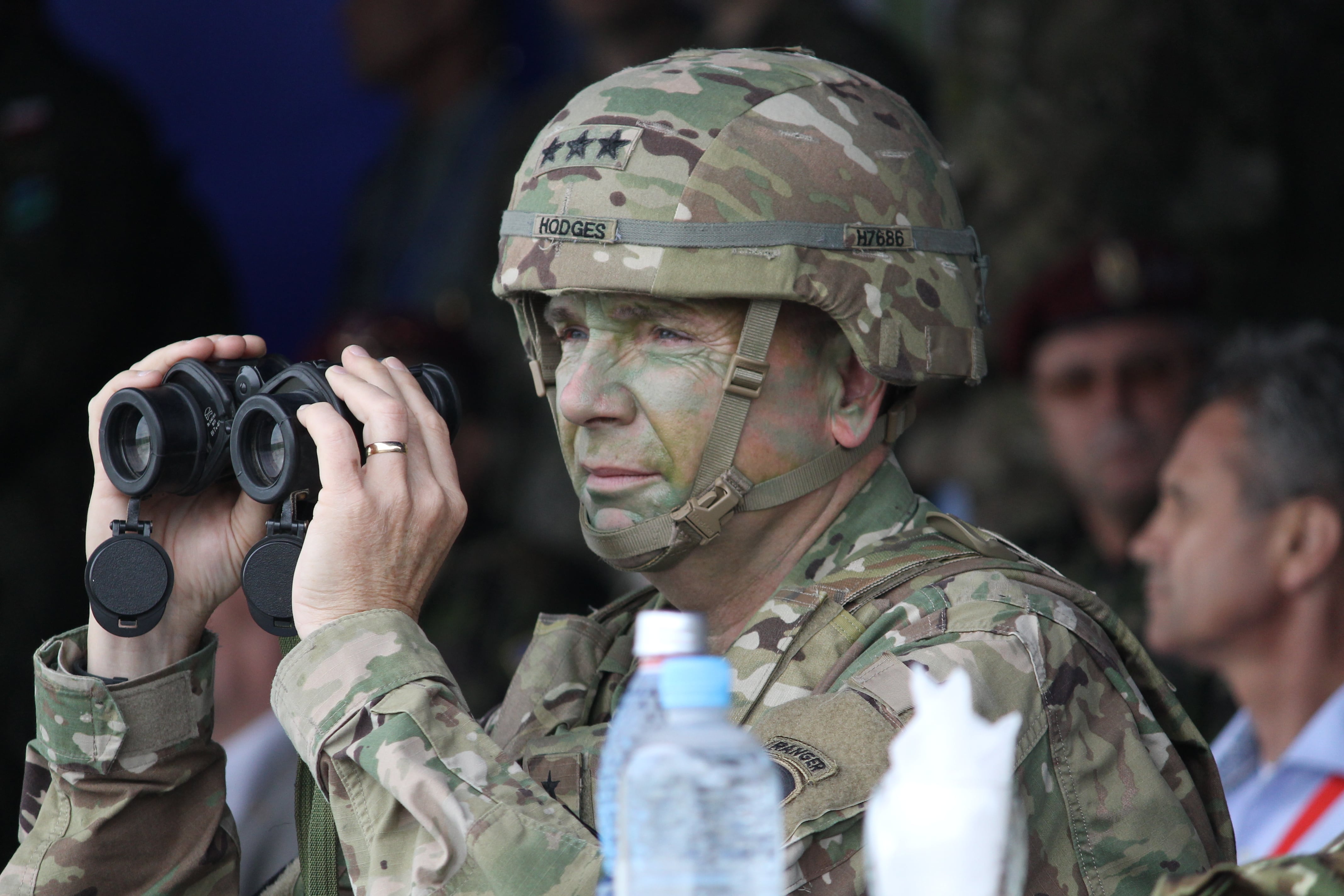VILNIUS, Lithuania — For the Baltic states, the desire for steadier and more robust American presence to deter Russia is high.
Ever since Russia annexed Crimea in 2014, NATO and the U.S. military have drastically bolstered their presence in Eastern Europe to include deploying NATO rapid response forces, embedding units under the command of Baltic states’ forces, building up arsenals of equipment, deploying a heel-to-toe rotational U.S. armored brigade combat team and conducting increasingly complex exercises.
The deployment of the enhanced forward presence, or EFP, battalions in Latvia, Lithuania and Estonia, for instance, have significantly reduced the risk of military conflict in the Baltic region, Lithuanian Defence Minister Raimundas Karoblis recently told Defense News and a group on an Atlantic Council-organized, fact-finding mission in Lithuania.
“On the other hand, let me be very clear: [The] U.S. is the most powerful ally and its deterrent effect is not comparable to other allies,” he told Defense News in a statement. “I am convinced that Russia would not dare to test NATO if U.S. military units are deployed on [a] persistent basis in the three Baltic states.”
RELATED

Karoblis suggested even a rather small U.S. military presence like short-range air defense units or an Army company in addition to each EFP battalion “would significantly boost NATO’s deterrence.”
The desire for a stronger American presence doesn’t just stem from Lithuania’s Ministry of Defence; it’s also preferred by top military leaders of the country’s Iron Wolf Brigade and the German-led NATO EFP unit.
Keeping the Russian bear at bay
Lithuania, in a tenuous position bordering Belarus and Kaliningrad, has dramatically ramped up its military capability since Russia’s move on Crimea. Lithuania is joined to Poland by a short 40-mile border — the Suwalki Gap — that separates Belarus from Kaliningrad. Should Russian forces close the gap, it would isolate Lithuania and its northern Baltic state neighbors from the rest of Europe.
The country hasn’t sat idly by, waiting for Europe or America to help; it has taken steps to modernize its military by buying new infantry fighting vehicles, tactical vehicles, howitzers and medium-range air defense systems, and it’s grown its ranks by adding another brigade and reinstating conscription.
Lithuania also met the NATO pledge to spend 2 percent of its gross domestic product on defense in 2018, and it’s planning to increase that effort to 2.5 percent by 2030.
But despite Lithuania’s military buildup and its Eastern European neighbors’ moves to strengthen defense of the eastern front, Russia continues to build up its military might in the Western Military District, increase cooperation in military exercises with Belarus, and militarize Kaliningrad with missiles and tanks, all to make Russia capable of succeeding in a regional conflict.
Then there are the allegations of Russia’s unconventional operations in the gray zone of conflict aimed at fracturing NATO and Europe by tampering with elections, engaging in cyberattacks and attempting to influence populations through false narratives in social media.
RELATED

When officials in Lithuania were asked what types of American military units it might want most, they were hesitant to provide specifics but reiterated the importance of U.S. presence.
The U.S. Army currently deploys 6,000 soldiers throughout seven countries as part of Atlantic Resolve in three separate rotations — armored, aviation and logistical — according to a U.S. Army Europe spokeswoman. In Lithuania specifically, the Pennsylvania National Guard, through the State Partnership Program, has traveled to the country on more than 275 occasions and conducted over 600 security cooperation engagements, the spokeswoman told Defense News.
There is also a unit-based partnership between the 2nd Cavalry Regiment and the Iron Wolf and Griffin brigades.
What would an additional US presence look like?
The U.S. Army regularly holds meetings to ensure it’s aligning its operations with the National Defense Strategy, which includes deployment strategy, Army Under Secretary Ryan McCarthy told reporters in a recent interview at the Pentagon.
The NDS squarely places Russia and China as the top two threats to the United States.
McCarthy said 60 percent of the Army’s brigade combat teams are nearing the highest level of readiness. “Those units could be put in the queue to go forward and deploy, but it’s got to be something where the [combatant command] comes forward and asks for that capability,” he said.
U.S. Army Europe would not tell Defense News possible options for further deployment in the Baltics, instead referring the inquiry to the Department of the Army.
RELATED

What might be provided in the Baltics probably wouldn’t be a big rotational brigade, but much smaller units, McCarthy said. “What is encouraging is the dialogue within NATO, as well as [U.S. Indo-Pacific Command], for the desire for expeditionary-like basing throughout both of those areas of responsibility with investment coming from host nations,” he said.
Poland, for instance, offered to pay $2 billion for a permanent base for a U.S. armored division in 2018, and the possibility seems to be gaining traction, but it is more likely to accommodate a brigade-sized unit scattered at installations already in existence.
RELATED

Former U.S. Army Europe commander, retired Lt. Gen. Ben Hodges, who continues to study European defense as the Pershing chair in strategic studies at the Center for European Policy Analysis, believes additional units, albeit small and specialized, should deploy to the Baltics on a more consistent basis.
If the U.S. were to put additional troops in Latvia, Lithuania and Estonia, Hodges told Defense News in a recent phone interview from his home base of Frankfurt, Germany, the units should have capabilities that fill host-nation gaps.
“I believe that the capabilities that we need would be logistics, intelligence, communications, and, really, air and missile defense,” he said. “In other words, enablers that take a little bit more time to get established, but which provide the important networks necessary for rapid reinforcement.”
Additionally, by deploying key enablers, many of the units can come from the Army National Guard and Army Reserves because those capabilities are resident in reserve formations and ideally suited for rotational presence, Hodges said.
“The Army is not going to grow in size anymore, and so if you want those capabilities, you are going to have to pull them out of the reserve components,” he said.
One reason not to deploy large infantry, armored or artillery units in Baltic countries is the little space available to train and live while a rotational basis.
Rukla training center, home of the Iron Wolf Brigade, “is saturated between the German EFP and the Lithuanians,” Hodges recalled of a visit while he was U.S. Army Europe commander. “So barring a huge expanse in training areas that meet the standard for U.S. Army readiness, I would prefer to see other types of units.”
According to U.S. Army Europe, Lithuania is devoting its national resources to expand capabilities at Rukla and Pabrade training areas that will “roughly” double the size and improve infrastructure.
“These range expansions and improvements will significantly increase opportunities for all our training partners,” an Army spokeswoman said.
Lithuania and U.S. Army Europe are also developing a national warfare and simulation training center, with the intent to make it a regional combat training center.
Hodges also warned that if more units are sent to the Baltics, it will be important to ensure they are integrated into existing mission command structures.
“In some cases, that may mean integrating them into allied formations or such as providing logistics to the EFP battle groups,” rather than stand-alone U.S. units, Hodges said. Those units would take up less of a footprint as well.
What else would help?
If the U.S. chooses not to send additional units to the Baltics as a deterrent to Russia, Hodges said, it should continue to encourage countries to improve infrastructure and increase military mobility so troops can rapidly amass.
Lithuania is working to improve border-crossing procedures, such as fast issuance of permits, and has demonstrated the ability to issue a permit within one hour. For instance, military vehicles were also able to cross the border without stopping during the American-led exercise Saber Strike in 2018 because the necessary checks were performed at a rest stop in Poland.
The country is also engaged in converting old Soviet rails to European gauge so the line reaches all the way to Kaunas in central Lithuania in time for the major U.S. exercise Defender Europe in 2020. The line will enable trains to load in Belgian and Dutch seaports and unload in the middle of Lithuania without delays triggered by the gauge difference.
RELATED

While Lithuania would like to see a more constant American flag flying in its country, there are factors that likely keep that from becoming a reality, such as a capacity issue: Even with the reserve forces stepping in, “we don’t have unlimited capacity,” Hodges said.
And sending troops on a continuous basis is not cheap. The U.S. has spent billions of dollars in the past several years through its European Reassurance Initiative, which has morphed into the European Deterrence Initiative.
NATO also needs to be on board with additional U.S. troops, particularly if those troops embed in the EFP units, Hodges stressed.
“The best deterrence that the alliance has is cohesion,” Hodges said. “That is the No. 1 thing that deters the Russian Federation from making a terrible miscalculation — that is cohesion that has no cracks … so we have to make sure that if we do decide to deploy additional capabilities into other countries, then we have done the diplomatic work necessary with all of our allies, not just the ones on the eastern front.”
Jen Judson is an award-winning journalist covering land warfare for Defense News. She has also worked for Politico and Inside Defense. She holds a Master of Science degree in journalism from Boston University and a Bachelor of Arts degree from Kenyon College.








